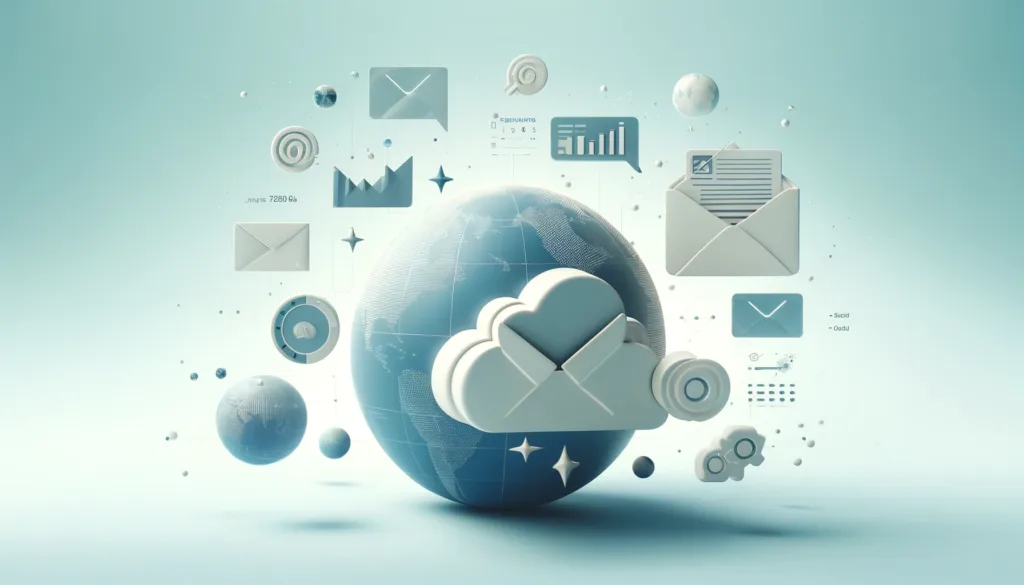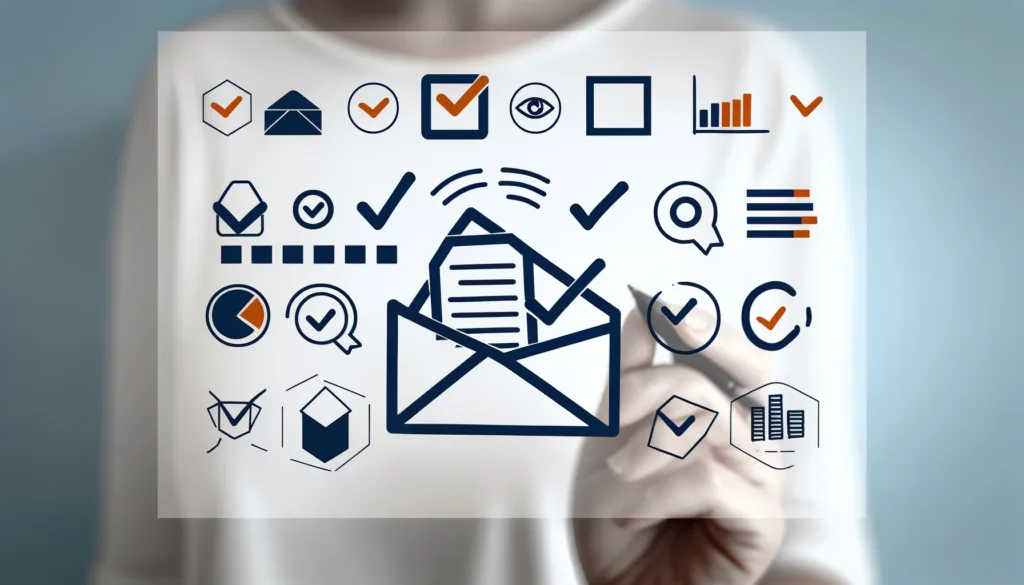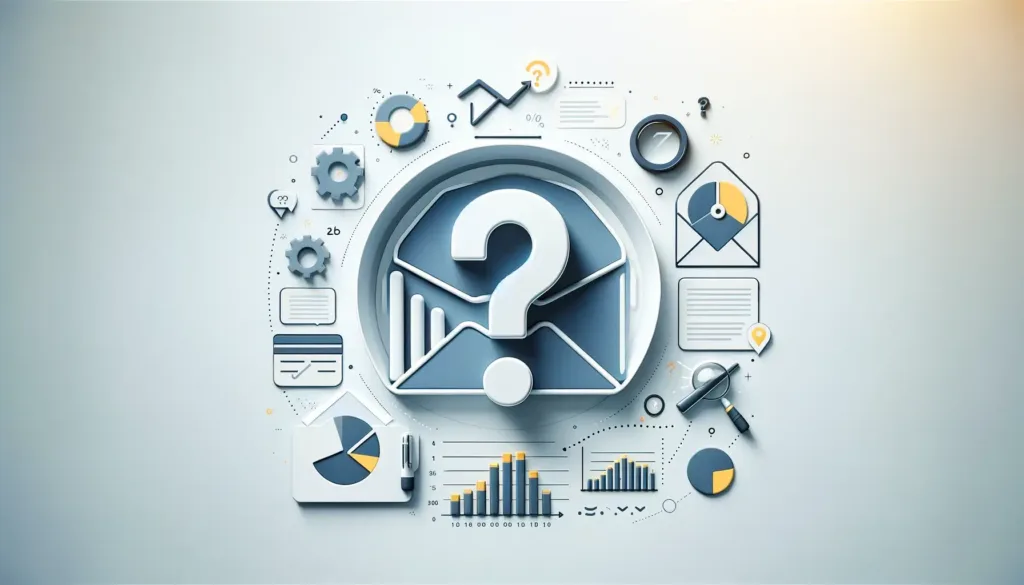Introduction
As digital marketing landscapes continuously evolve, many wonder if traditional methods like email marketing still hold their value in 2024. With new platforms and technologies emerging, it’s crucial to reassess the effectiveness and relevance of email marketing strategies today.
The State of Email Marketing in 2024
Current Statistics and Trends
Email marketing has consistently demonstrated a strong return on investment (ROI). In 2024, email marketing still boasts one of the highest ROI among digital marketing channels, with an average return of $42 for every dollar spent. This enduring effectiveness underscores its value in a marketer’s toolkit.
Technological Advancements
Advancements in AI and machine learning have transformed how marketers create and send emails. These technologies allow for greater personalization and timing optimization, making emails more relevant and engaging than ever before.
Benefits of Email Marketing in the Modern Digital Landscape


Cost-Effectiveness
Email marketing remains one of the most cost-effective marketing strategies. According to a 2023 study by the Data & Marketing Association, the cost per acquisition in email marketing is significantly lower compared to other digital channels. This makes it especially attractive for small to medium-sized enterprises (SMEs) operating on limited budgets.
Personalization and Segmentation
The power of email marketing lies in its ability to personalize content directly to the interests of the recipient, which increases engagement rates. Tools like Mailchimp and Campaign Monitor provide sophisticated segmentation features that allow marketers to tailor messages based on user behavior, demographics, and past interactions.
Automation and Efficiency
Automation technology has revolutionized email marketing by making campaigns more efficient and scalable. Platforms like HubSpot offer automation features that can trigger emails based on specific actions, such as website visits or product purchases, ensuring timely and relevant communication with customers.
Challenges Facing Email Marketing
Deliverability Issues
Overview of Deliverability
Deliverability challenges, such as emails landing in spam folders, significantly impact the effectiveness of email marketing campaigns. Factors influencing deliverability include sender reputation, email content quality, and recipient engagement levels.
Combatting Deliverability Problems
To improve deliverability, ensure your email lists are clean and up-to-date, avoid spam trigger words in your content, and regularly monitor your sender reputation scores through tools like Sender Score.
Rising Competition
Inbox Clutter
With the average person receiving numerous emails daily, the competition for attention in inboxes is fiercer than ever. This clutter makes it challenging for brands to stand out.
Strategies to Stand Out
To capture attention, focus on crafting compelling subject lines and personalized content. Utilize A/B testing to find the most effective approaches that resonate with your audience.
Regulatory Compliance
Understanding Compliance
Email marketing must comply with regulations such as the GDPR in Europe and the CAN-SPAM Act in the U.S., which dictate how businesses can collect, store, and use email addresses.
Implementing Compliance Measures
Ensure your email marketing practices adhere to these regulations by obtaining explicit consent to send emails, providing clear unsubscribe options, and maintaining transparent data practices.
Who Can Benefit From Email Marketing in 2024?
Small and Medium Enterprises (SMEs)
Cost-Effective Marketing
SMEs often operate with limited marketing budgets, making the cost-effectiveness of email marketing particularly appealing. It allows for direct customer engagement without the high costs associated with other channels.
Building Customer Relationships
Email marketing enables SMEs to build and maintain relationships with their customers through regular updates, personalized offers, and valuable content, fostering loyalty and repeat business.
Large Corporations
Integrated Marketing Strategies
For large corporations, email marketing serves as a crucial component of comprehensive marketing strategies. It integrates seamlessly with other digital marketing efforts, enhancing the overall reach and consistency of messaging across platforms.
Data-Driven Insights
Large organizations can leverage the extensive data generated from email campaigns to gain insights into customer preferences and behavior, aiding in more informed business decisions.
Startups
Rapid Audience Building
Startups can use email marketing to quickly build their audience base. By offering subscription incentives and valuable content, they can gather leads and accelerate their growth.
Direct Feedback Channel
Email provides startups with a direct channel to solicit feedback on their offerings, which is crucial for rapid iteration and improvement based on user responses.
Best Practices for Email Marketing in 2024


List Building and Maintenance
Growing Your Email List
Effective email marketing starts with building a robust email list. Offer value through sign-up incentives like free ebooks, webinars, or discount codes to encourage subscriptions. Ensure that the sign-up process is straightforward and accessible from multiple touchpoints such as your website, social media profiles, and during customer interactions.
Maintaining List Health
Regularly purge your email list to eliminate inactive subscribers and incorrect email addresses. This practice helps improve deliverability and ensures your analytics reflect engaged user interactions.
Content Strategies
Creating Engaging Content
Create emails that offer genuine value to your subscribers. Include useful information, insider tips, or exclusive offers. Tailor content to meet the interests and needs of different segments of your audience to increase relevance and engagement.
Visuals and Formatting
Use attractive visuals and a clean layout to make your emails easy to read and engaging. Responsive email design ensures your messages look good on both desktops and mobile devices, enhancing the user experience.
The Role of Content Quality and Relevance in Establishing Topical Authority.
Testing and Optimization
Analytics and Feedback
Use email marketing tools to track open rates, click-through rates, and conversions. Analyze this data to understand what works and what doesn’t, and continually adjust your strategy based on this feedback.
Advanced Strategies: Predictive Analytics with Google Trends Data.
The Future Outlook of Email Marketing
As we look beyond 2024, the landscape of email marketing continues to evolve, shaped by technological advancements and changing consumer behaviors. Here’s what experts predict for the future of this enduring digital marketing channel.
Predictions and Trends
Increased Personalization: Experts from Forbes predict that personalization will become even more sophisticated, with emails not only tailored to individual preferences but also to real-time behaviors. This will likely involve more integration of AI technologies that can analyze data quickly and automate highly personalized content.
Integration of AI and Machine Learning: According to TechCrunch, the future of email marketing will heavily rely on AI and machine learning to optimize everything from send times to content creation, making campaigns more effective and efficient.
Greater Emphasis on Privacy: With data privacy concerns on the rise, marketers will need to prioritize transparency and privacy compliance more than ever. This might mean more rigorous consent mechanisms and clearer communication about data usage, as noted by regulations like GDPR.
Integrating New Technologies
Adoption of Blockchain Technology: Blockchain could revolutionize email marketing by enhancing security and providing better control over data. This technology might allow consumers to own and control their data directly, affecting how marketers access and use consumer information.
Advanced Analytics Tools: As analytics tools evolve, they will provide deeper insights and more actionable data. Marketers will be able to refine their strategies in real-time, adapting to the effectiveness of ongoing campaigns, predicts a recent Gartner report.
Staying Ahead of the Curve
To remain competitive in email marketing, professionals will need to:
Continuously Learn: Stay updated with the latest tools, trends, and techniques. Regular participation in industry conferences and courses can help.
Experiment with New Technologies: Be open to adopting new technologies that can enhance campaign effectiveness, such as predictive analytics and enhanced automation tools.
Conclusion
Recap of Email Marketing’s Value in 2024
Throughout this article, we’ve explored the enduring relevance of email marketing in 2024, examining its benefits, challenges, and the evolving landscape that shapes its strategies. Despite the rise of new digital marketing channels, email marketing remains a powerful tool due to its cost-effectiveness, ability to personalize, and its robust analytical capabilities.
Embracing the Future
As we move forward, the integration of advanced technologies like AI, machine learning, and potentially blockchain will redefine how email campaigns are crafted and delivered. Marketers who embrace these changes, continually update their skills, and adhere to best practices in personalization and privacy will find email marketing remains not only relevant but essential.
Final Thoughts
Email marketing in 2024 continues to offer significant value to marketers who are willing to adapt and innovate. By understanding your audience, leveraging the latest technologies, and maintaining a commitment to ethical marketing practices, you can use email to effectively communicate with customers, build relationships, and drive business growth.
- Cost-Effectiveness of Email Marketing for Startups in 2024 - May 21, 2024
- How to Integrate AI with Email Marketing in 2024 - May 20, 2024
- Building an Email List in 2024: Strategies and Tips - May 17, 2024

